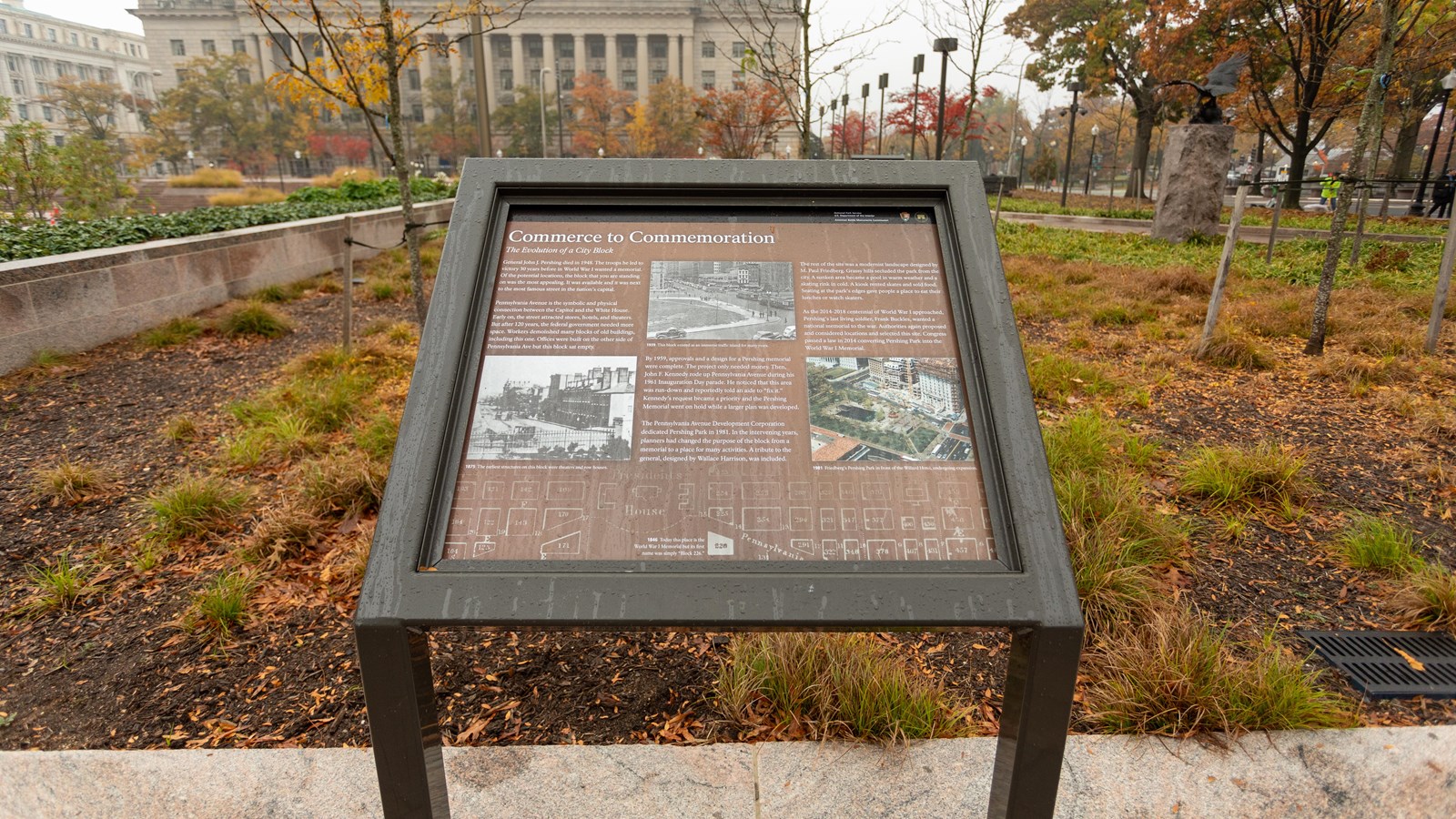Last updated: July 20, 2023
Place
Information Panel: Commerce to Commemoration

NPS / Claire Hassler
Quick Facts
Amenities
1 listed
Historical/Interpretive Information/Exhibits
The Evolution of a City Block
General John J. Pershing died in 1948. The troops he led to victory 30 years before in World War I wanted a memorial. of the potential locations, the block that you are standing on was the most appealing. It was available and it was next to the most famous street in the nation's capital.Pennsylvania Avenue is the symbolic and physical connection between the Capitol and the White House. Early on, the street attracted stores, hotels, and theaters. But after 120 years, the federal government needed more space. Workers demolished many blocks of old buildings, including this one. Offices were built on the other side of Pennsylvania Ave. but this block sat empty.
By 1959, approvals and a design for a Pershing memorial were complete. The project only needed money. Then, John F. Kennedy rode up Pennsylvania Avenue during his 1961 Inauguration Day paratde. He noticed that this area was r un-down and reportedly told an aide to "fix it." Kennedy's request became a priority and the Pershing Memorial went on hold while a larger plan was developed.
The Pennsylvania Avenue Development Corporation dedicated Pershing Park in 1981. In the intervening years, planners had changed the purpose of the block from a memorial to a place for many activities. A tribute to the general, designed by Wallace Harrison, was included.
The rest of the site was a modernist landscape designed by M. Paul Friedberg. Grassy hills secluded the park from the city. A sunken area became a pool in warm weather and a skating rink in cold. A kiosk rented skates and sold food. Seating at the park's edges gave people a place to eat their lunches or watch skaters.
As the 2014-2018 centennial of World War I approached, Pershings last living soldier, Frank Buckles, wanted a national memorial to the war. Authorities again proposed and considered locations and selected this site. Congress passed a law in 2014 converting Pershing Park into the World War I Memorial.
Photo captions:
1846 - Today this place is the World War I Memorial but its first name was simply "Block 226."
1875 - The earliest structures on this block were theaters and row houses.
1939 - This block existed as an immense traffic island for many years.
1981 - Friedberg's Pershing Park in front of the Willard Hotel, undergoing expansion.
